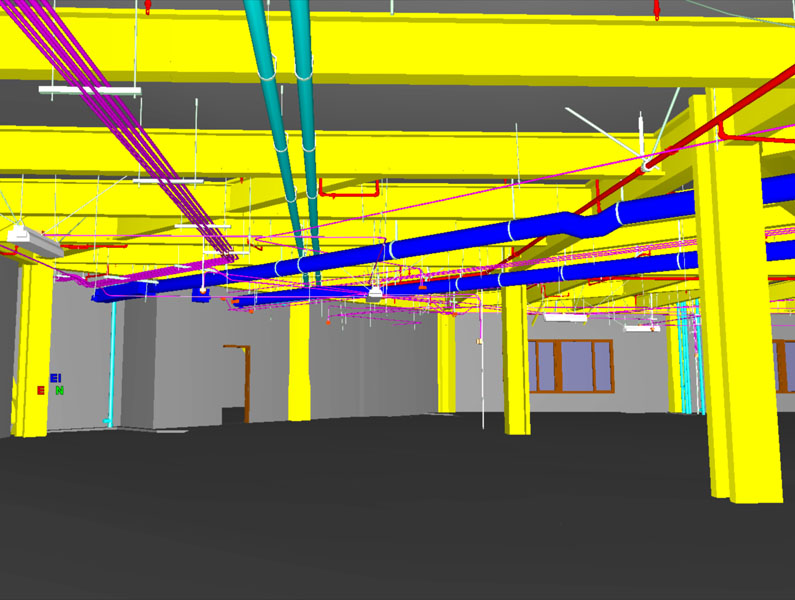Debunking common BIM myths
 Over the last decade, BIM has gained prominence within the AECO industry. With BIM’s capability to foster more efficient and faster project delivery, it’s easy to see why their adoption rate has increased. When done right, BIM can also help reduce costs and foster better decision-making processes.
Over the last decade, BIM has gained prominence within the AECO industry. With BIM’s capability to foster more efficient and faster project delivery, it’s easy to see why their adoption rate has increased. When done right, BIM can also help reduce costs and foster better decision-making processes.
Even with all these benefits, some construction companies still fail to see how BIM can fit into their organizations. However, many of these hindering beliefs they hold are myths. In this post, we dispel some of these myths so you can create buy-in for BIM within your organization.
BIM is simply a trend that will pass away soon…
Whenever a new technology arises, many people see it as a fad. And in all honesty, most eventually end down the drains. However, BIM isn’t one of them! BIM offers tremendous benefits that make them superior to any other thing in the construction industry!
Back in the early days, paper, two-dimensional designs were the real deal. But that was soon replaced with computer-aided design (CAD) software that helped visualize projects in 3D. BIM is an extension of 3D models. It adds additional dimensions like information about scheduling (4D), costs (5D), and many more.
These capabilities are too sweet to turn down. And it’s difficult to see how BIM would not play an even greater role in the construction industry for decades to come.
BIM is nothing more than software
To be fair, having the right software is a crucial part of BIM. However, BIM is way bigger than ‘just software’ used to create building models. It involves a rethinking and reorganization of the way building projects are carried out.
From its definition, BIM is an intelligent 3D model-based process that gives AEC professionals the insights and tools to more efficiently plan, design, construct, and manage infrastructure and buildings. BIM’s primary focus is on creating a collaborative way for everyone involved in a project to work together, from architects to engineers to even stakeholders.
BIM is only for big companies
Embracing a new technology like BIM doesn’t come without its challenges. The huge upfront investment in time and training can be daunting, especially for smaller companies trying to do the barest minimum to stay afloat.
Even though big companies might have more resources to easily adopt BIM, it’s no excuse for small companies to evade adoption. Turning down BIM would hurt any organization in the long run as BIM is here to stay. And because BIM helps to streamline workflows, improve collaborations, and plan better, adopting BIM – even as a small company – can help save costs in the long run while maintaining a competitive edge.
BIM is for project planning, not execution
While BIM is an invaluable tool for project planning, its usefulness extends throughout the entire project lifecycle, from planning to designing to constructing and even managing. One great way to think about BIM is its integrative capabilities. It doesn’t consider each stage of the project as separate entities. Instead, it sees the larger picture and collects important information.
Data collected during the planning stage will help during the execution stage. Similarly, information collected through the execution phase will be beneficial for operation and maintenance down the line.
BIM is just 3D modeling
No doubt, 3D modeling is an important part of BIM, albeit just a small part of a humongous process. The ‘modeling’ in building information modeling extends beyond the visual representation of building models. It is, instead, a part of a digital dataset and database centered around a collaborative framework.
The Common Data Environment hosts both graphical and non-graphical information that is used to generate data-rich models that can help manage data throughout the life of infrastructure. Saying BIM is just about 3D modeling is an unjustified reductionism.
BIM has little impact on long-term productivity
There is nothing further from the truth! Anti-BIM advocates point how BIM takes time to scope and implement in the initial stage. While it is true that careful planning and implementation takes up more time and resources, this initial investment benefits long-term productivity.
Just think about the training and learning curve required to make the shift towards BIM. That can be daunting, but that’s just the way it is when learning new technology. But with time, people will get used to it, and greater productivity will naturally follow.
BIM is expensive
Again, shifting from a traditional system to BIM will involve lots of upfront costs, just like any other transition would. However, what truly matters is the long-term costs involved, and BIM is not expensive from that perspective.
During the planning stages of a project, the aspects of BIM that will be implemented will help determine the BIM tools that will be used. With proper planning, these tools can be free or inexpensive. Asides from helping professionals attain spending budgets, BIM can also help speed up completion time.
Contact us here today for more information.

